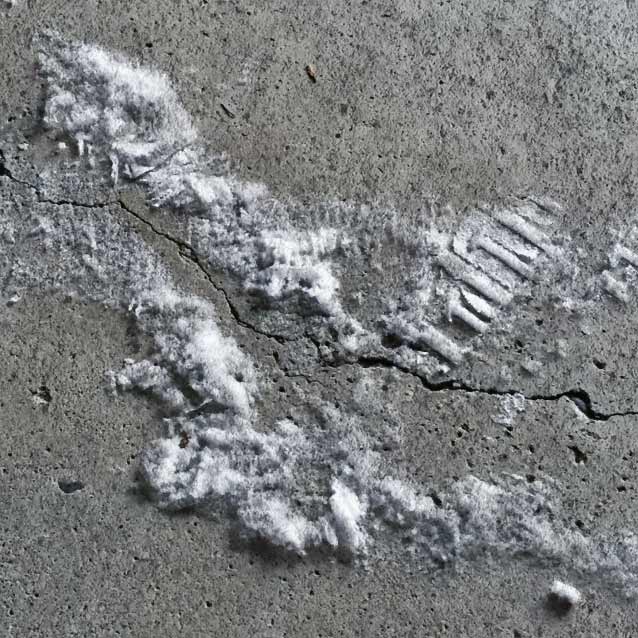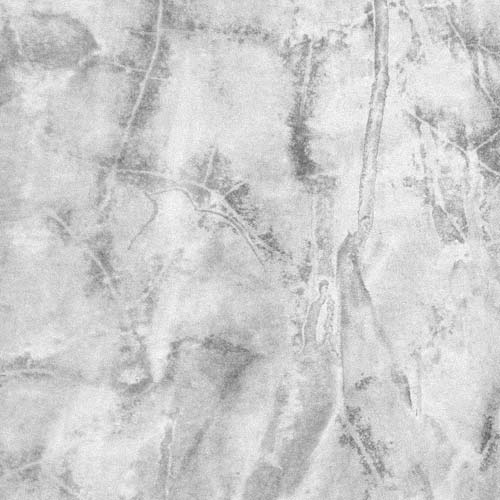Concrete Surface Prep Part 2: Oil, Grease and Dirt
Contaminant-Free Concrete – Removing Oil, Grease and Dirt
In Concrete Surface Preparation – Part I, we looked at detecting, removing and repairing unsound concrete. The next step is to remove contaminants from the concrete. We can’t jump right to blasting though, for the same reasons that you don’t immediately start blasting steel.
Dirt, dust and other loose contaminants will inhibit bond formation and can be removed first by sweeping, vacuuming, air blasting or water spraying.
Hydrophobic materials, like oil, grease and form-removal lubricants will also inhibit bonding and should be spot-removed. It’s tempting to remove them by blasting off the contaminated layer, but that can exacerbate the problem by smearing the contaminants over previously uncontaminated areas. The recommended methods of removal are scrubbing with a brush, water and detergent, steam cleaning and low-pressure washing (under 345 bar (5000 psi)). Some chemical cleaning methods are appropriate, but not solvent cleaning. Unlike steel, concrete has pores and cracks that solvents can enter, inhibiting bond formation.
A thorough discussion of acceptable surface cleaning methods can be found in SSPC SP 13/NACE No. 6 – Surface Preparation of Concrete.
Water Drop Test
Hydrophobic contaminants can be detected by a simple water-drop test. Let drops of water fall on the surface. If the surface is clean, water drops will spread out immediately. If not, they will remain droplet form.

Efflorescence
Efflorescence is a powdery, crystalline deposit that slowly forms as migrating moisture leaches soluble salts to the concrete surface.
Efflorescence is an aesthetic problem, not a structural one, but must be remedied when the concrete surface is serving as the topping. If not, efflorescence will cause unsightly stains underneath sealants and decorative finishes.
Being a soluble salt, efflorescence can be removed by scrubbing with a brush and water, pressure washing, or light vapour abrasive blasting. However, unless the underlying moisture issue is resolved, efflorescence will return.
Moisture Issues
If the relative humidity of the air is less than the cured concrete slab, moisture will be drawn from below the slab to the surface, causing efflorescence, mould and the emulsifying of floor covering adhesives. Where sealants and other impermeable coatings block vapour flow, delaminations and blisters can occur. The fix is to install a vapour barrier under the slab.
There are two common tests for the relative humidity of concrete:
Plastic Sheet Test. A plastic sheet is taped to the concrete surface and left in place for 16 hours or more, then removed and inspected for condensation. See ASTM D4263
Calcium Chloride Test. A dish containing calcium chloride is weighed, then placed on the concrete surface and sealed under a dome. Sixty to seventy-two hours later, the dish is weighed again. The increase in weight of the sample indicates the amount of moisture absorbed, which is used to calculate the moisture vapour emission rate (MVER). See ATSM F1869.

Laitance
Laitance is a weak, friable layer of cement and fine aggregates that is carried to the surface by water bleeding out of the concrete. It is a result of too much water in the mix or too much water applied during curing, and is always present to some degree on new concrete. If laitance is not removed, repairs, overlays and coatings are likely to fail, because the friable layer has poor material strength. However, laitance is hard enough to warrant removal by abrasive blasting, shot blasting, grinding, high-pressure water blasting, or acid washing.
Laitance is present when the concrete surface is scraped with a sharp object and leaves a powdery residue.
Curing compounds are applied during the curing process to seal the concrete, to retain water for cement hydration. Because they seal the pores in the concrete, curing compounds will inhibit bonding of mortars and overlays. Adhesive layers and previous coatings present the same problem. The solution is to remove the concrete layer to below the level of the compound penetration by abrasive blasting, shot blasting, high-pressure water blasting or mechanical means.
With the concrete sound and contaminant-free, all that’s left is to adequately roughen the surface, but to what degree? In part III of our series on Concrete Surface Preparation, we’ll look the framework specifiers and blasters use to agree on how much profiling is required, and examine the various methods of concrete surface preparation, their pros and cons and their applications.
Related articles
Silica Dust and Wet Abrasive Blasting
Innovation in abrasive blasting technology being driven by the need to control silica dust
PPE & Respirator Requirements For Safe Abrasive Blasting
Everything you need to know about blasting PPE for dry, wet and vapour abrasive blasting.
How to Prevent Flash Rust When Wet Blasting
As wet cleaning methods have increased, so has the prevalence of flash rust and the need to prevent it - here are a few tips.
